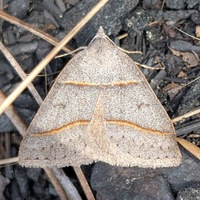
view caption
1. New Hanover Co., March 23, 1994, J.B. Sullivan
2. New Hanover Co., April 11, 2016, J.B. Sullivan
3. Craven Co., April 10, 1991, J.B. Sullivan
4. New Hanover Co.,April 3, 1995, J.B. Sullivan
5. New Hanover Co., April 20, 1994, J.B. Sullivan
6. Craven Co., April 7, 1998, J.B. Sullivan
| 
view caption
1. Male, Craven Co., July 13, 1978, J.B. Sullivan 2. Male, Carteret Co., February 22, 2017, J.B. Sullivan 3. Male, Madison Co., April 13, 2012, J.B. Sullivan 4. Female, Harnett Co., June 30, 2003, J.B. Sullivan 5. Female, Carteret Co., February 27, 2017, J.B. Sullivan 6. Female, New Hanover Co., April 3, 1995, J.B. Sullivan |  |

 »
»



 »
»

